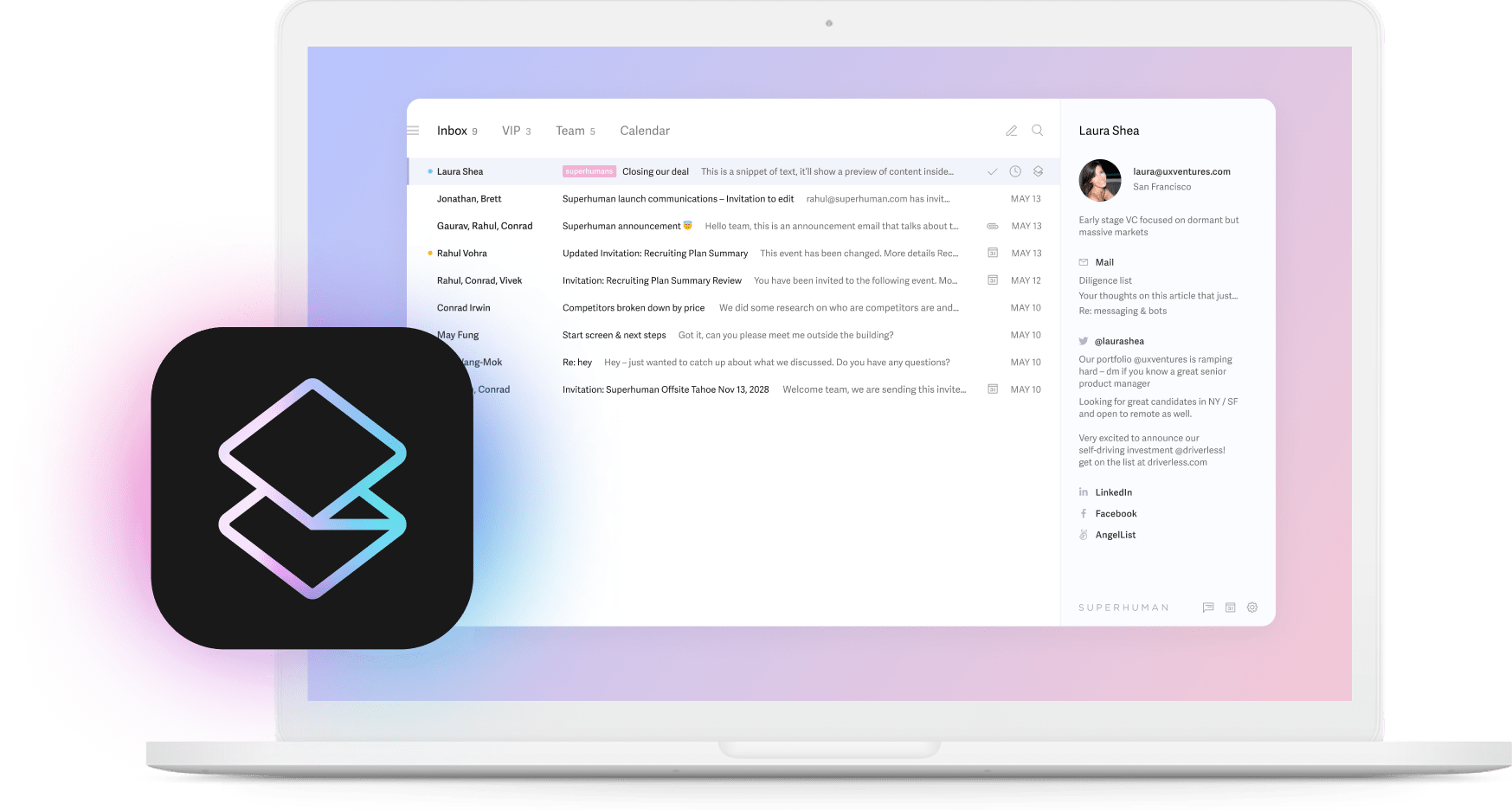
AI workflow automation delivers measurable results: finance teams save 30% of their time, customer service sees 50%+ productivity improvements, and sales teams can double their selling time. These platforms eliminate repetitive tasks, free up brainpower for creative thinking, reduce errors in routine processes, accelerate work by running 24/7, and create standardized workflows that scale.
Here are nine AI workflow automation platforms changing how work happens. Each brings something unique, whether you're taming an overflowing inbox, connecting different apps, or building sophisticated workflows for an entire enterprise.
At a glance: The 9 top AI workflow automation tools
What are AI workflow automation tools?
AI workflow automation tools are intelligent software platforms that use artificial intelligence to automate repetitive business processes, connect different applications, and streamline workflows across organizations. Unlike traditional automation that follows rigid if-then rules, AI-powered tools can understand context, make decisions, learn from patterns, and adapt to changing conditions.
These platforms combine several key capabilities: they connect disparate software applications to enable seamless data flow, use machine learning to make intelligent decisions about routing and prioritization, automate repetitive tasks like data entry and document processing, and provide analytics to optimize workflows over time.
How we evaluated these AI workflow automation tools
To identify the best AI workflow automation tools, we assessed each platform across several critical dimensions:
- AI capabilities: Does the platform offer genuine AI-powered features like natural language processing, intelligent routing, contextual understanding, and adaptive learning? Or does it simply add "AI" to marketing while relying on traditional rule-based automation?
- Speed and user experience: How quickly can users complete tasks? Automation should accelerate work, not add friction through clunky interfaces or slow processing.
- Integration depth: Does the platform connect with the tools professionals actually use? We prioritized platforms with robust integrations for email, calendars, CRMs, and productivity apps.
- Ease of implementation: Can teams start seeing value quickly, or does setup require weeks of configuration and technical expertise?
- Pricing transparency: Is pricing straightforward and predictable, or do hidden costs emerge as usage scales?
- Domain expertise: Does the platform excel in a specific workflow area, or spread itself thin trying to do everything?
The best AI workflow automation tools combine powerful capabilities with focused execution. A platform that deeply understands one workflow often outperforms generalist tools that automate everything superficially.
1. Superhuman Mail: Redefining email with AI workflow automation
Superhuman Mail is the most productive email app ever made. Teams using Superhuman Mail save 4 hours per person every week, respond 12 hours faster, and handle twice as many emails.
It works with Gmail and Outlook but offers enhanced capabilities for people who rely heavily on their inbox. For people whose success depends on quick communication, Superhuman Mail focuses on fast email management, applying the 100ms rule to ensure a seamless experience.
Key features and benefits
- AI-native email assistance, including Write with AI that turns quick phrases into polished emails and Instant Reply that generates contextual draft responses matching your writing style
- Auto Summarize displays a 1-line summary above every conversation that updates instantly as new emails arrive
- Split Inbox separates important messages from less urgent ones automatically, with customizable splits for VIPs, team messages, newsletters, and more
- Auto Labels use AI to categorize incoming messages like a world-class executive assistant, automatically classifying emails into categories like marketing, cold pitches, social updates, and messages requiring your response
- Snippets are reusable templates with built-in variables that automatically personalize messages with recipient names and custom placeholders
- Remind Me brings messages back to your inbox at the perfect time so you never drop the ball on follow-ups
- Read Status shows exactly when someone opens your message
- Share Availability lets people book time with you directly from your email signature
- Smart Send delivers emails at optimal times for higher open rates
- Ask AI lets you query your inbox, calendar, and the web with natural language ("find positive quotes about our new feature" or "when is my flight")
- Keyboard Shortcuts for blazing-fast processing, with Superhuman Command (Cmd+K) as your master control to find and take any action
- Calendar integration lets you view your schedule, share availability, create events with AI, and find meeting times with teammates without leaving your inbox
- CRM integrations with Salesforce, HubSpot, and Pipedrive bring full customer context into your inbox and let you update records without switching apps
The platform represents a new category of AI-native email clients that go beyond traditional automation. Rather than simply sorting emails, Superhuman Mail's AI understands context and intent, drafting responses that maintain your personal tone and voice. This addresses a critical gap: the need for automation that enhances rather than replaces human communication skills.
Pricing
Superhuman Mail starts at $25/user/month with annual billing. Business and Enterprise plans are available for teams requiring additional features and support.
2. Zapier: Connecting apps with AI workflow automation
Zapier functions like digital duct tape for your apps, connecting them together without needing a single line of code. You can create automated workflows (they call them "Zaps") between popular tools in minutes.
Key features and benefits
- No-code automation between 5,000+ apps, including Slack, Gmail, and Salesforce
- Simple drag-and-drop interface for creating complex multi-step workflows
- Ability to automate tasks like creating tickets, updating CRMs, and sending notifications
- Built-in templates for common workflows to help you get started quickly
- Scalable from simple connections to sophisticated business processes
Small businesses and marketing teams especially value Zapier because it doesn't require an IT department to set up. It grows with you as your needs evolve. However, Zapier's strength lies in connecting disparate apps rather than optimizing any single workflow deeply. Teams looking for deep optimization in specific areas like email or communication may find generalist platforms lack the speed and intelligence of purpose-built solutions.
Pricing
Zapier offers a free tier with 100 tasks/month. The Professional plan starts at $19.99/month (billed annually) for 750 tasks, with pricing scaling based on task volume and features needed.
3. Make (formerly Integromat): Visual AI workflow automation
Make transforms workflow automation into something that looks more like art than programming. Its visual builder lets you see your workflows as they take shape, similar to mapping out a journey where data flows exactly where you need it.
Key features and benefits
- Visual workflow builder that makes complex processes easy to understand
- Advanced data transformation capabilities that filter, format, and enhance information
- Support for complex API integrations that other automation tools can't handle
- Powerful error handling and conditional logic for reliable automation
- Balance of customer-friendly interface with deep technical capabilities
The platform shines when standard tools can't handle your unique needs, such as pulling data from specialized APIs or creating custom reports. Though powerful for app connectivity, it lacks the contextual AI decision-making found in more specialized workflow platforms, and its credit-based pricing can become unpredictable as workflows scale in complexity.
Make offers a free tier with 1,000 operations/month. The Core plan starts at $9/month (billed annually) for 10,000 operations, with Pro and Teams plans available for advanced features and collaboration.
4. Notion AI + Notion Automations: Enhancing collaboration
Notion AI feels like giving your team a collective brain upgrade. It's where your workspace and workflow engine merge, creating something especially valuable for remote teams who can't just tap someone on the shoulder when they need information.
Key features and benefits
- AI tools that draft content, summarize documents, and polish ideas
- Automation features for updating recurring items and syncing information across databases
- Centralized knowledge management that connects team documentation with workflows
- Templates and databases that can be customized for any team or process
- Seamless integration of content creation, project management, and collaboration
What makes Notion different is how it blends content creation with process management. Product teams use it to transform customer feedback into action plans in minutes. Marketing departments automate content calendars while using the AI to draft briefs.
That said, Notion's automation capabilities are workspace-bound, meaning it excels at organizing and managing information but doesn't optimize the communication channels where most work originates. Teams whose bottleneck is email volume or response time may find they need additional tools to address those upstream challenges.
Notion AI is included in the Business plan at $20/user/month (billed annually). Free and Plus plans offer only a limited trial of 20 AI responses. Legacy users who subscribed to the AI add-on before May 2025 retain access at $8-10/user/month.
5. n8n: Open-source AI workflow automation
n8n stands as the workflow automation tool for people who like to look under the hood. Being open-source and self-hostable gives you complete control over your ecosystem, allowing you to manage your data, security, and customizations exactly as you need.
Key features and benefits
- Open-source platforms offering self-hosted deployment options for complete control
- Visual workflow builders enabling business customers to create automations without coding
- JavaScript/Python support for developers to handle complex edge cases and custom logic
- Ability to integrate with legacy systems and custom APIs
- API-first architecture supporting multi-layer integration required for enterprise-scale automation
The platform particularly shines with complex data transformations, pulling information from multiple sources and transforming it completely. While n8n rewards technical investment with unmatched flexibility, it requires more technical know-how than alternatives and lacks the polished, speed-optimized experience of purpose-built productivity tools. Organizations without dedicated developer resources may face a steeper learning curve and longer time-to-value.
Pricing
n8n's Community Edition is free to self-host with unlimited executions. Cloud plans start at $20/month (billed annually) for 2,500 executions, with Pro at $50/month for 10,000 executions. Enterprise pricing is custom.
6. ClickUp with AI: Streamlining task management
ClickUp tackles the chaos of task management by combining robust organization tools with AI assistance. It becomes the central nervous system for your projects, automating the routine parts of keeping work organized and flowing smoothly.
Key features and benefits
- All-in-one project management platform that replaces multiple tools
- AI tools that help draft task descriptions and project summaries
- Automated task updates, assignments, and reminders across departments
- Customizable workflows that adapt to different team processes
- Seamless handoffs between teams with automated notifications
Marketing teams use ClickUp to run entire campaigns from conception to execution, with tasks automatically flowing to the right people at the right time. Development teams set up automations that notify QA when features are ready for testing.
However, task management tools like ClickUp require context-switching away from where communication actually happens. For professionals who spend significant time in email, toggling between platforms can fragment attention and slow response times, offsetting some productivity gains from task automation.
Pricing
ClickUp offers a free tier for personal use. Paid plans start at $7/user/month (billed annually) for Unlimited, with Business at $12/user/month and Enterprise pricing available for larger organizations.
7. Workato: Enterprise-grade AI workflow automation
Workato connects cloud applications and databases across even the largest organizations, enabling information flow between systems that previously couldn't communicate with each other.
Key features and benefits
- Enterprise-grade integration platform built for large, complex organizations
- AI-native data routing and transformation that gets smarter over time
- Built-in compliance and governance controls for regulated industries
- Cross-department process automation that eliminates communication silos
- Low-code interface that balances ease of use with enterprise capabilities
Finance departments use Workato to automate complex processes like month-end closing. HR teams connect their different systems so employee information stays consistent everywhere. IT departments automatically route support tickets to the right specialists based on content.
For teams whose primary workflow bottleneck is email communication rather than system integration, Workato's enterprise complexity may be overkill. The platform is designed for organizations with sophisticated IT infrastructure needs, and its pricing reflects that enterprise positioning.
Pricing
Workato uses custom pricing based on organizational needs, with quotes typically starting in the five-figure range annually. Contact their sales team for a tailored quote.
8. Salesforce Einstein Automation: Enhancing CRM with AI
Salesforce Einstein Automation makes your CRM work harder so your sales and service teams don't have to. By analyzing your existing Salesforce data, Einstein makes smart decisions about prioritization, routing, and follow-ups that previously required human judgment.
Key features and benefits
- AI-native lead scoring that identifies your most promising opportunities
- Automated personalized follow-up sequences based on customer interactions
- Smart case routing for service teams that gets issues to the right agent
- Predictive analytics that forecast sales outcomes and service resolution times
- Native integration with Salesforce that requires no additional setup
Organizations implementing such systems report measurable improvements in conversion rates and faster case resolution times. However, 45% of executives report AI initiative returns below expectations, with organizational transformation proving more critical to success than platform selection alone.
Einstein is also ecosystem-locked, requiring existing Salesforce investment to deliver value. Teams using other CRMs or those seeking to optimize communication workflows outside the Salesforce environment will need to look elsewhere.
Pricing
Einstein Automation is included with most Salesforce licenses at no additional cost. Advanced Einstein features are available in premium Salesforce editions, with Sales Cloud and Service Cloud pricing starting at $25/user/month for Starter Suite.
9. Microsoft Power Automate: Seamless integration with AI
Microsoft Power Automate connects the entire Microsoft universe and beyond with automation that feels familiar from day one. If your organization runs on Microsoft 365, Power Automate plugs right into the tools you already use daily: Excel, SharePoint, Teams, and Outlook.
Key features and benefits
- Deep integration with Microsoft 365 applications for seamless workflow automation
- Robotic Process Automation (RPA) for interacting with legacy applications
- AI Builder for extracting text from images, processing forms, and sentiment analysis
- Pre-built templates for common business processes
- Enterprise-grade security framework inherited from the Microsoft ecosystem
IT departments use RPA to streamline provisioning, finance teams automate invoice processing, and HR departments create onboarding experiences spanning multiple systems.
As with other ecosystem-dependent platforms, Power Automate delivers the most value for organizations already committed to Microsoft. Its generalist approach means it handles many workflows adequately but may not match the depth and speed of tools purpose-built for specific high-volume workflows like email management.
Pricing
Power Automate is included with Microsoft 365 Business and Enterprise plans. Standalone plans start at $15/user/month for premium connectors and RPA capabilities, with Process plans at $150/user/month for attended RPA.
How do AI workflow automation tools work?
AI workflow automation tools operate through several interconnected mechanisms that work together to streamline business processes.
- Integration layer: These tools connect to your existing software applications through APIs (Application Programming Interfaces), webhooks, and pre-built connectors. This integration layer enables data to flow seamlessly between different systems – from your email and calendar to your CRM, project management tools, and databases.
- Trigger-action sequences: At their core, these platforms use trigger-action logic. A trigger is an event that starts the automation (like receiving an email, adding a new customer record, or completing a task), while actions are the automated steps that follow (sending a notification, updating a database, or creating a document).
- AI decision-making: The intelligence layer uses machine learning algorithms to make contextual decisions. For example, AI can analyze email content to determine urgency and route it accordingly, predict which leads are most likely to convert, or suggest the next best action based on historical patterns.
- Natural language processing: Many modern AI workflow tools incorporate NLP capabilities that understand human language. This enables features like automatically categorizing support tickets, generating draft responses that match your writing style, or extracting key information from documents.
- Continuous learning: These systems improve over time by learning from user behaviors, corrections, and outcomes. The more you use them, the better they become at predicting your needs and automating tasks in ways that align with your preferences.
What is the difference between AI workflow automation tools and data syncing?
While both AI workflow automation tools and data syncing platforms help information flow between systems, they serve fundamentally different purposes.
Data syncing platforms focus on keeping information consistent across multiple databases or applications. When you update a customer record in one system, that change automatically reflects in all connected systems.
AI workflow automation tools go far beyond simple data synchronization. They orchestrate complex multi-step processes, make intelligent decisions based on context, and trigger actions across multiple systems based on business logic. These platforms can analyze email content to determine urgency, automatically route customer inquiries to the right department, generate personalized responses, and learn from patterns to optimize processes over time.
Key differences
- Scope: Data syncing focuses on keeping records consistent; workflow automation orchestrates entire business processes
- Intelligence: Data syncing follows simple update rules; AI workflow automation makes contextual decisions and learns over time
- Action types: Data syncing updates fields; workflow automation can send emails, create documents, assign tasks, trigger notifications, and execute complex multi-step sequences
Many organizations use both: data syncing to maintain information consistency, and AI workflow automation to orchestrate the business processes that act on that data.
Get started with AI workflow automation
The AI workflow automation landscape offers options for every need and technical skill level. General connectors like Zapier and Make excel at linking apps together. Workspace tools like Notion AI and ClickUp streamline team collaboration. Enterprise platforms like Workato and Salesforce Einstein handle complex organizational requirements.
But for most knowledge workers, the highest-impact automation opportunity is clear: email. It's where professionals spend the most time, where communication bottlenecks form, and where AI can deliver immediate, measurable productivity gains.
Superhuman Mail brings AI workflow automation to your inbox with features designed for speed: Instant Reply, Auto Summarize, Split Inbox, and Ask AI. No configuration required. No workflows to build. Just faster email from day one.
Fly through your inbox and save 4 hours per person every week.






